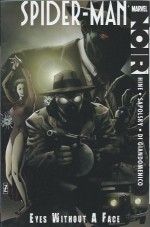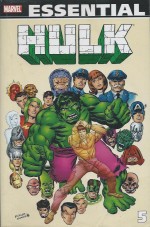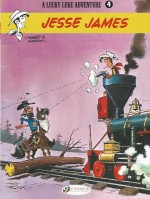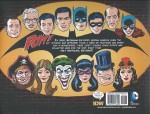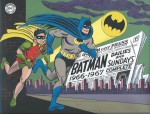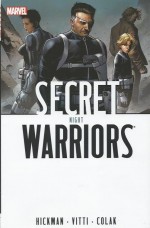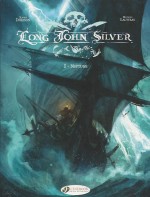
By Xavier Dorison & Mathieu Lauffray, translated by Jerome Saincantin (Cinebook)
ISBN: 978-1-84918-072-6
British and European comics have always been far more comfortable with period-piece strips than our American cousins and much more imaginative when reinterpreting classical fiction for jaded comicbook audiences. The happy combination of familiar exoticism, past lives and world-changing events blended with drama, action and, most frequently, broad comedy has resulted in a uniquely narrative art form suited to beguiling readers of all ages and tastes.
Our Franco-Belgian brethren in particular have made an astonishing success out of repackaging days-gone-by but this particularly enchanting older-readers yarn forgoes the broad bellylaughs whilst extending the adventures of literature’s greatest rogue into a particularly engaging realm of globe-girdling thriller.
Robert Louis Stevenson’s Treasure Island was originally serialised from 1881-1882 in Young Folks magazine as Treasure Island or, the mutiny of the Hispaniola, pseudonymous penned by one “Captain George Northâ€.
It was collected and published as a novel in May 1883 and has never been out of print since. A landmark of world storytelling, Treasure Island has been dramatised too many times to count and adapted into all forms of art. Most significantly, the book created a metafictional megastar – albeit at best an anti-hero – as immortal as King Arthur, Robin Hood, Sherlock Holmes, Tarzan or Superman. Almost everything the public “knows†about pirates devolves from the book and its unforgettable, show-stealing one-legged star…
Writer Xavier Dorison was born in Paris in 1970 and graduated business school before moving into storytelling. He works as an author, film writer, lecturer and movie script doctor. He began the award-winning Long John Silver in conjunction with preferred collaborator Mathieu (Prophet) Lauffay in 2006, with the last volume released in 2013.
Lauffay is also a Parisian born in 1970. He spends his days illustrating, drawing comics, crafting RPGs and working as a concept designer for movies. His art has graced such international items as Dark Horse Comics’ Star Wars franchise, games like Alone in the Dark, the album Lyrics Verdun, February 21, 1916 – December 18, 1916, Tarzan and many more…
Their continuation of the piratical prince is a foray into far more mature arenas set some years after the affair of the Hispaniola and ranges far and wide: from foggy, oppressive England to the vast, brooding inner recesses of the Amazon.
What has Gone Before: 1785 and treasure-hunting Lord Byron Hastings has finally found the lost city of Guiana-Capac but now needs further funds to exploit this promising City of Gold.
In England, his profligate and wanton wife Lady Vivian has been enjoying herself too much and is with child by lecherous neighbour Lord Prisham. With a baby in her belly and a husband gone three years, she is considering having Byron declared dead and undertaking a hasty remarriage…
Suddenly shattering those plans is her despised brother-in-law who turns up with an old native named Moxtechica bearing a message and map from her long-lost husband. Prudish and cruel Royal Naval officer Edward Hastings delights in telling the scheming strumpet he abhors that his brother has succeeded and now orders her to sell everything… including all the treasured family possessions, manor house and lands she brought to the marriage…
Byron has named Edward sole Proxy and the martinet delights in giving the high-born trollop Vivian her marching orders. He strongly urges her to confine herself to a convent and save them all further shame and disgrace…
Raging in front of her conniving maid Elsie, the Lady considers a number of retaliatory tactics before settling upon the most bold, dangerous and potentially rewarding. After announcing to the stunned Edward that she will accompany him to South America and reunite with her beloved husband, the fallen noblewoman seeks out a doctor to take care of the “problem†she is – for the moment at least – still secretly carrying…
Dr. Livesay is a decent, god-fearing soul who has led a quiet, prosperous life since his adventures on Flint’s Island. However, it is not her current condition which has brought Vivian to the physician’s door, but rather persistent tales of a scurrilous former acquaintance; a formidable, peg-legged rogue with a reputation for making life’s difficulties disappear…
Against his better judgement, Livesay capitulates to Lady Vivian’s urgings, introducing her to retired sea-cook John Silver. Amidst the (alleged) ex-pirate’s inner circle of scary-looking confederates she relates the story of the Spaniard Pizarro‘s discovery of a City of Gold and how, centuries later, her husband has reclaimed it.
The rest of her sorry tale tumbles out. She plans to travel there with a few capable men – and the far-from-willing Elsie – to make those riches her own. She needs Silver and his colleagues to infiltrate Edward’s crew, seize the ship he has chartered and complete the voyage under her command…
Unable to convince Vivian to desist or Silver to reject her offer, Livesay reluctantly joins them in vain hopes that he can keep the debased woman from mortal harm. Silver is hiding a debilitating and soon-to-be-fatal case of malaria, but still orchestrates his own hiring before packing the Neptune with suitable scoundrels and compelling Lady Vivian to sign a sacrosanct Pirates Contract. With all the various schemers believing their own plans are proceeding satisfactorily, the Neptune sets off for the Americas, but at the last moment Silver suffers a major setback when rival rogue Paris inveigles his way into the crew…
Volume two commences with the voyage well under way and the crew – Silver’s men, Paris’ contingent and even Captain Edward Hastings’ innocent hires – all slowly succumbing to the Sea Cook’s glib tongue and fascinating tales of the Red Brotherhood. Only Hastings’ lieutenants Dantzig and Van Horn have any inkling of the battle of wills occurring below decks, but the shaky détente is shattered after duplicitous Elsie tries to expose Lady Vivian’s plans only to suffer a tragic “accident†when a huge load of storage barrels falls upon her.
Hastings knows all too well that his ship is filled with men just waiting for him to pilot them to the mouth of incomprehensible wealth. Thus he rules with a rod of iron and full naval discipline just to stay alive.
Boy seaman Jack O’Kief is a protégé of Paris, but Silver has developed a fondness for the lad. That relationship is tested to the limit when Hastings declares Jack responsible for the maid’s death and has him brutally flogged to force the Sea Cook’s hand.
A vicious and prolonged battle of wills follows, pushing the crew to the edge of mutiny as Hastings stalls in making final landfall and Jack’s life slowly ebbs away…
Tensions come to a tragic head as a colossal storm pushes the Neptune inexorably towards its foregone destination and another death sparks the inevitable mutiny, appalling bloodshed and a red-handed settling of many scores…
Literally above it all, the shaman Moxtechica rides out the tempest above and the savage battle of the white men below, patiently waiting to see what the calm of dawn will bring…
To Be Continued…
Tense, evocative, suspenseful and shockingly powerful, these further exploits of Long John Silver are a modern masterpiece of adventure fiction worthy of Stevenson’s immortal adventure which should even convince a few more folks to actually read the original novel. © Darguad, Paris, 2008 by Dorison & Lauffray. All rights reserved. English translation © 2011 Cinebook Ltd.


